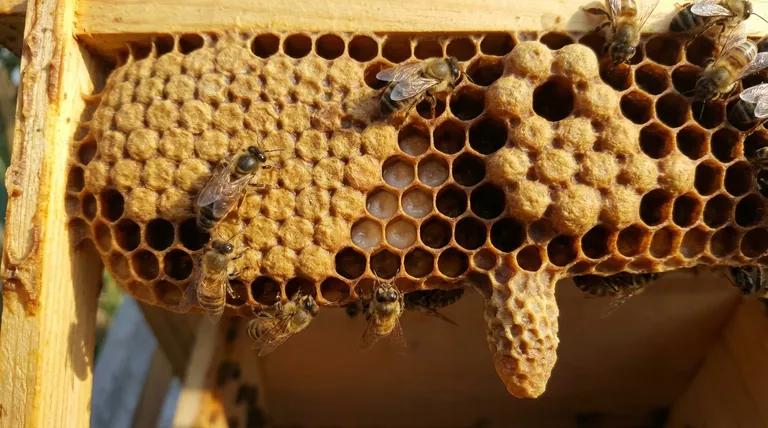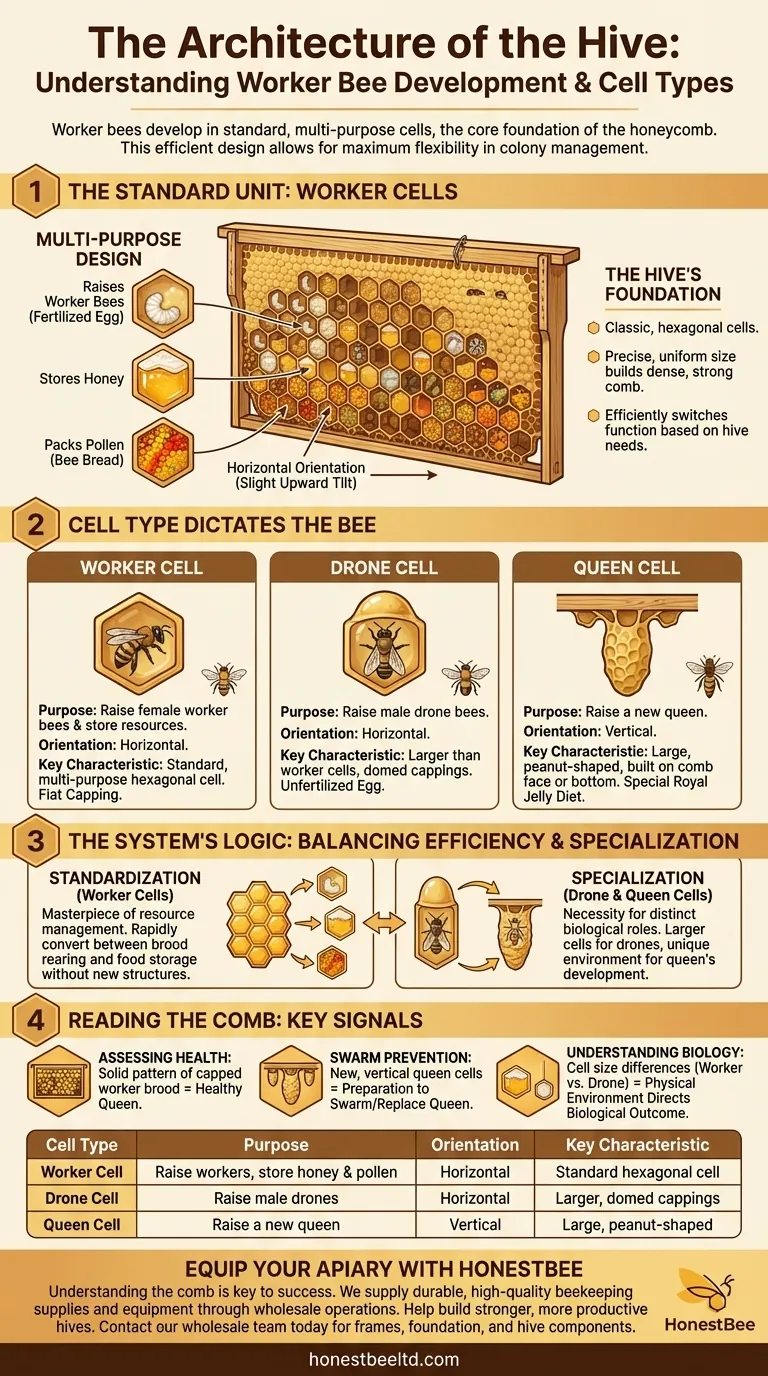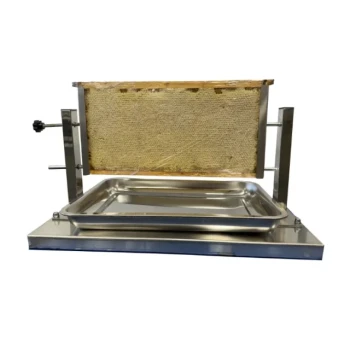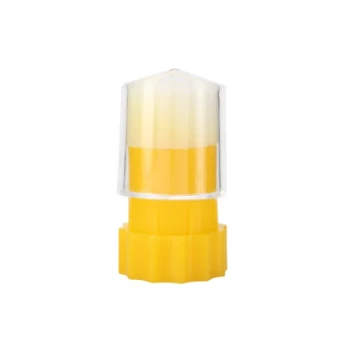In short, worker bees develop in the standard, multi-purpose cells that make up the vast majority of the honeycomb. These horizontally-oriented cells are the fundamental building blocks of the hive, used interchangeably for raising new workers, storing honey, and packing pollen.
The beehive is a model of efficiency, and the worker cell is its core component. The colony uses a single, standardized cell design for both raising its workforce and storing its resources, allowing for maximum flexibility and adaptability.

The Foundation of the Hive: The Worker Cell
A honeybee colony's success hinges on its ability to manage resources and population. The design of the comb, specifically the worker cell, is central to this strategy.
A Multi-Purpose Design
The vast majority of cells in a healthy hive are worker cells. These are the classic, hexagonal cells most people picture when they think of a honeycomb.
The colony uses these cells dynamically. Depending on the season and the hive's needs, a single cell might be used to raise a new worker bee, then cleaned out and used to store nectar, which is later cured into honey. It could also be used to store "bee bread"—a mixture of pollen and nectar.
The Standard Unit of the Comb
Worker cells are the smallest type of cell built by the bees. Their precise, uniform size is what allows the colony to build the dense, strong, and incredibly efficient structure of the comb.
They are always built with a slight upward angle, appearing horizontal to an observer. This slight tilt helps prevent honey from dripping out before the bees can cap the cell with wax.
How Cell Type Dictates the Bee
While the worker cell is the default, the colony constructs different cells for specific purposes, demonstrating a sophisticated understanding of their own developmental needs.
Worker Cells vs. Drone Cells
If the queen lays a fertilized egg into a standard worker cell, it develops into a female worker bee.
However, bees also build slightly larger cells known as drone cells. If the queen lays an unfertilized egg into one of these larger cells, it will develop into a male drone bee. Beekeepers can easily spot patches of drone brood because the capped cells have a slightly domed, bullet-like appearance compared to the flatter cappings of worker brood.
The Unique Queen Cell
The queen cell is completely different. It is not a standard hexagon integrated into the comb. Instead, it is a large, peanut-shaped cell that hangs vertically from the face or bottom of a frame.
These special cells are built only when the colony needs to raise a new queen, either because the old one is failing or the colony is preparing to swarm. A worker larva is moved into this cell and fed a special diet of royal jelly, which triggers its development into a queen.
Understanding the System's Logic
The hive's use of different cell types is not random; it's a finely tuned system that balances efficiency with the need for specialization.
The Advantage of Standardization
Using one primary cell type (the worker cell) for the workforce and for all food storage is a masterpiece of resource management. It allows the colony to rapidly convert sections of the hive from food storage to brood rearing (or vice versa) without having to build new, specialized structures.
The Necessity of Specialization
The existence of drone and queen cells shows the limits of this standardization. A larger drone requires a larger cell for proper development. A queen, whose role is biologically unique, requires a completely distinct environment and diet to develop her specialized anatomy.
Reading the Comb in Your Hive
By understanding cell types, you can decode the story of your colony.
- If your primary focus is assessing colony health: A solid, continuous pattern of capped worker brood is the number one sign of a healthy, productive queen.
- If your primary focus is swarm prevention: The appearance of new, vertical queen cells is the most definitive signal that the colony is preparing to swarm or replace its queen.
- If your primary focus is understanding hive biology: The simple difference in cell size for workers and drones is a perfect example of how a physical environment can direct a biological outcome.
Recognizing the function of each cell type transforms the honeycomb from a simple structure into a dynamic map of the colony's past, present, and future.
Summary Table:
| Cell Type | Purpose | Orientation | Key Characteristic |
|---|---|---|---|
| Worker Cell | Raise worker bees, store honey & pollen | Horizontal | Standard, multi-purpose hexagonal cell |
| Drone Cell | Raise male drone bees | Horizontal | Larger than worker cells, domed cappings |
| Queen Cell | Raise a new queen | Vertical | Large, peanut-shaped, built on comb face |
Equip Your Apiary with HONESTBEE
Understanding the intricacies of the comb is key to successful beekeeping. Whether you're a commercial apiary managing thousands of hives or a distributor supplying the industry, having the right equipment is non-negotiable.
HONESTBEE supplies durable, high-quality beekeeping supplies and equipment through wholesale-focused operations. We help you build stronger, more productive hives.
Ready to strengthen your operation? Contact our wholesale team today to discuss your needs for frames, foundation, and other essential hive components.
Visual Guide

Related Products
- Professional Adjustable Stainless Steel Honeycomb Display Stand
- Brown Nicot Queen Cell Cups for Breeding Queen Bees Beekeeping
- JZBZ Push-In Queen Cell Cups for Beekeeping
- JZBZ Type Wide Base Plastic Queen Cell Cups for Base Mounting and Queen Rearing
- Electric Honey Press Machine for Squeezing Honey Comb Press Equipment
People Also Ask
- How does the honey extraction process work in the Flow Hive? A Guide to Gentle, On-Tap Harvesting
- What is the purpose of a honey refractometer? Ensure Quality and Prevent Honey Spoilage
- What is the role of a honey refractometer in harvesting? Prevent Fermentation & Ensure Quality
- How does the Flow Hive work? A Look at the Revolutionary 'Honey on Tap' System
- What are the key stages of honey extraction? A Complete Guide for Beekeepers



















